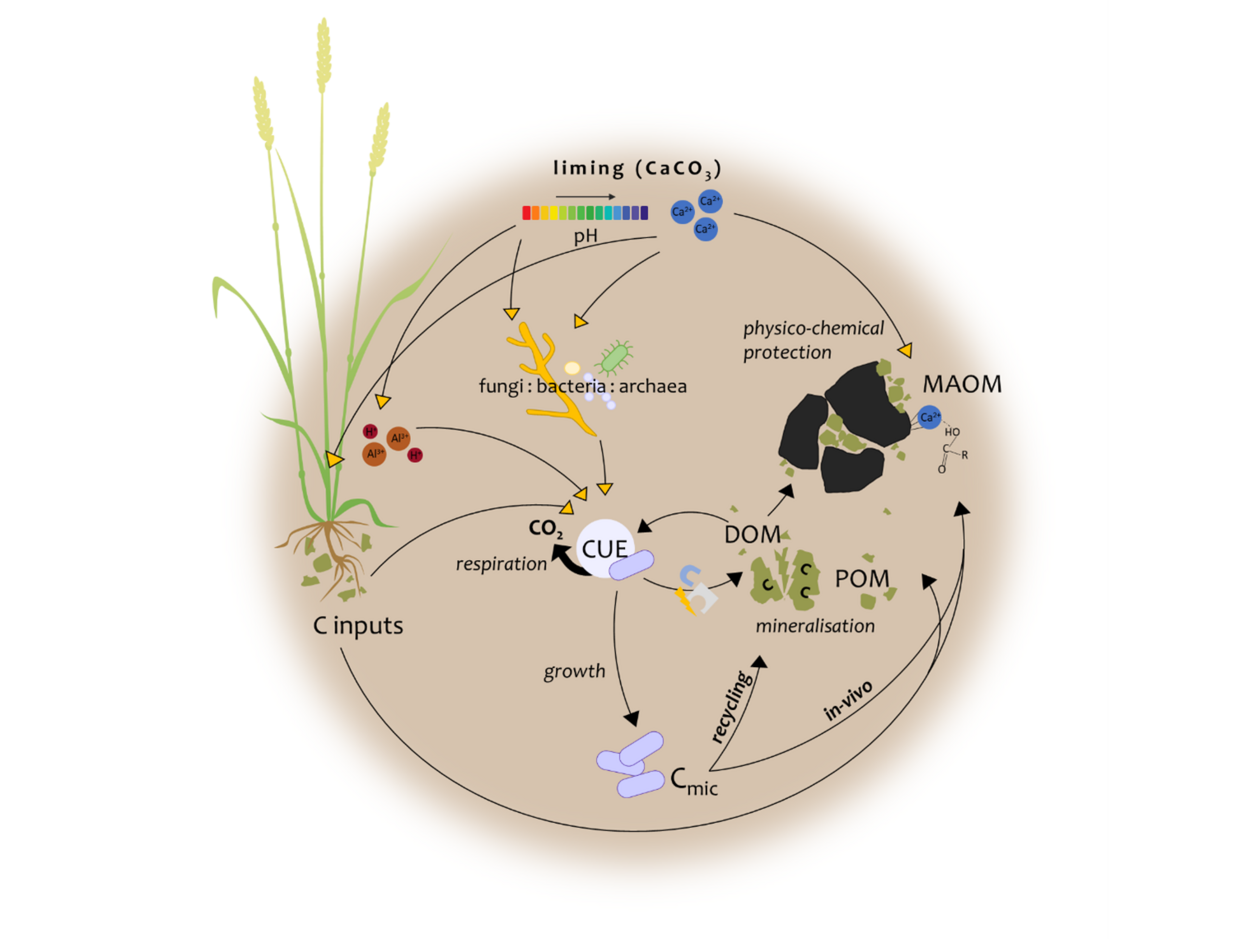Soil pH is an important driver of microbial communities and physiology and could therefore also affect C cycling in soils. In this study, we tested if the efficiency by which microbes metabolise C was affected by liming and how this may link to overall OC stocks. Overall, CUE~pH relationship described a U-shape with the lowest CUE values close to pH = 6.4. Our results suggest that at low initial soil pH, increases in pH may shift the microbial community (qPCR data) and thereby reduce CUE. At high pH, alteration of nutrient availability may be the major driver of increases in CUE. But how does this link to SOC stocks? Overall, liming increased SOC stocks. The net effect of liming on SOC stocks is however the sum of multiple liming effects. For example, at one site (of three), liming tremendously increased C inputs. This, however, did not increase SOC stocks likewise. The reduction in CUE with liming may counteract the benefits of additional C inputs. Our study confirms the value of liming as a management practice for climate-smart agriculture, but demonstrates that it remains difficult to predict the impact on SOC stocks due its complex effects on the C cycle.
Scroll to top

![[Translate to English:] [Translate to English:]](/media/_processed_/6/4/csm_titel_CO2Kampagne8_afeea2273e.png)
![[Translate to English:] [Translate to English:]](/media/_processed_/4/1/csm_titel_93px_CO2Kampagne8_9b0f3354d4.png)

![[Translate to English:] Logo des Bundesministerium für Ernährung und Landwirtschaft](/media/allgemein/logos/BMEL_Logo.svg)